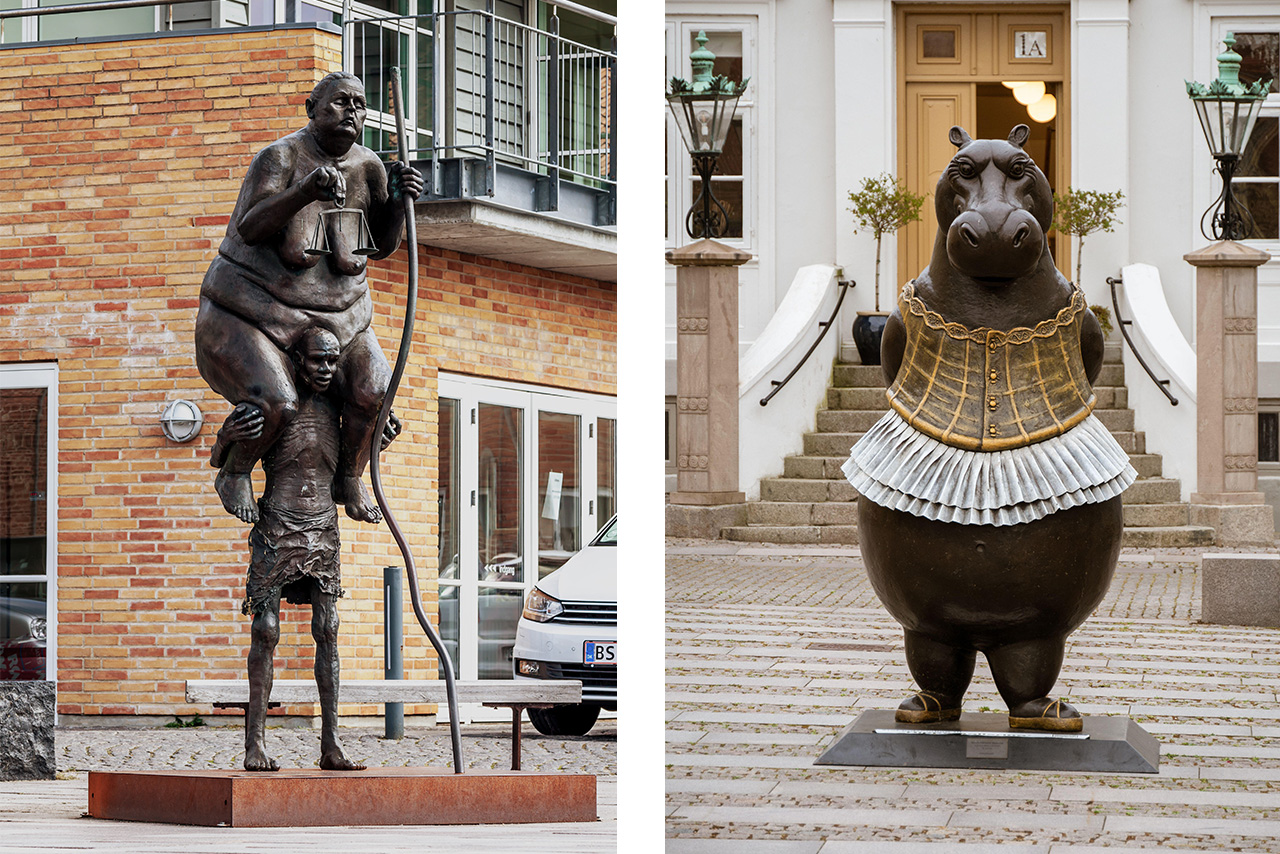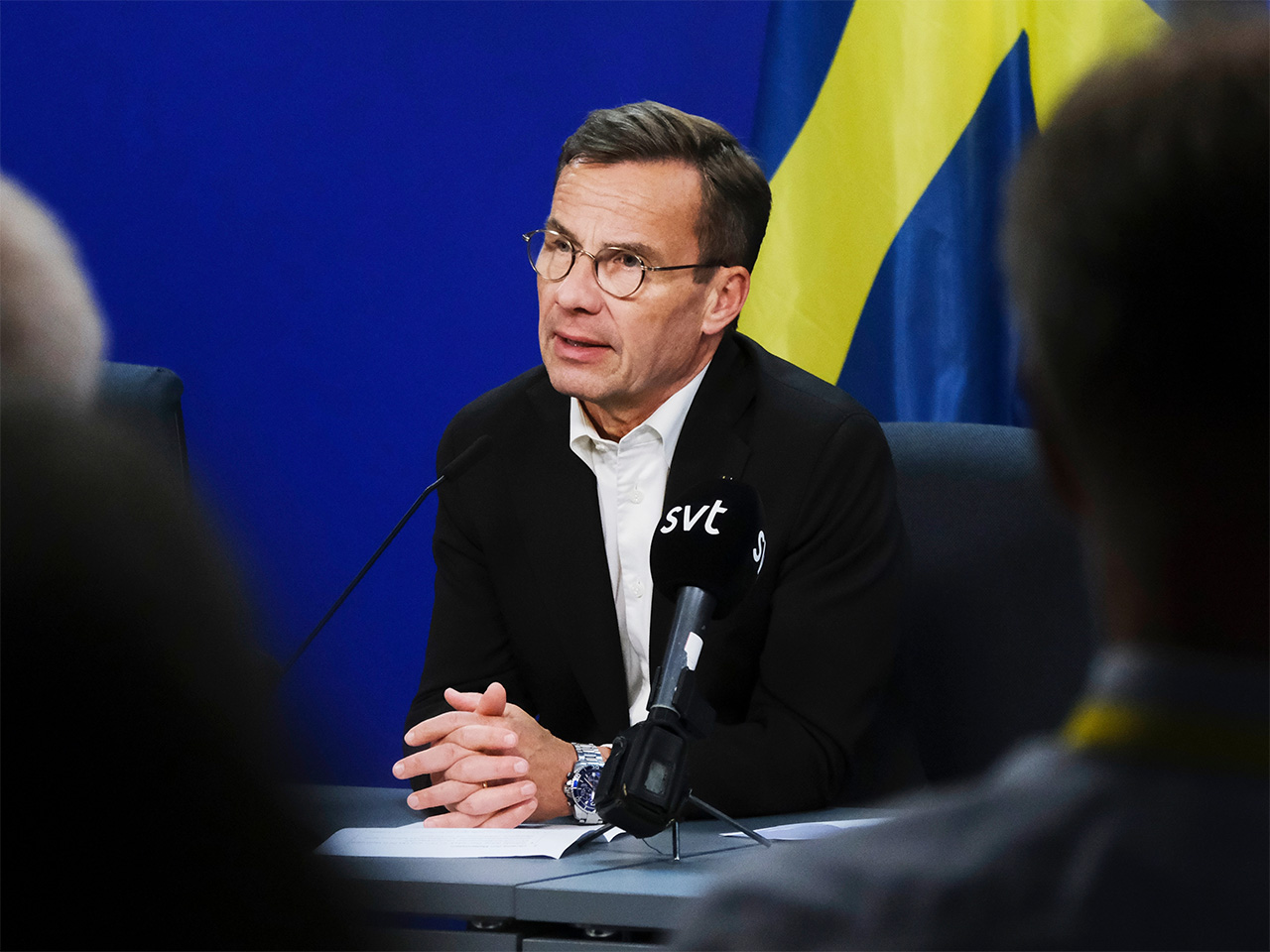The new law protecting Europe’s public broadcasters, carrying the day with an NZZ tote and getting down to business with ‘Monocle: The Entrepreneurs’.
|
Wednesday 13/8/25
|

|
|
London
Paris
Zürich
Milan
Bangkok
Tokyo
Toronto
|
|
|
|

Good morning from Midori House. For more news and views, tune in to Monocle Radio or visit monocle.com. Here’s what’s coming up in today’s Monocle Minute:
THE OPINION: Denmark’s public art hits rock bottom
MEDIA: The new law protecting Europe’s public broadcasters
DAILY TREAT: Smarted up with an NZZ tote
THE LIST: Getting down to business with ‘Monocle: The Entrepreneurs’
|
|
Denmark’s glaring design flaw is on public display
By Michael Booth
|

|
The Danes are justly renowned for their design prowess but news of a controversial statue suggests that they do not excel in all of the visual arts. In fact, they have struggled in the realm of public art and sculpture in recent years.
The new calamity concerns a rather fruity reinterpretation of Edvard Eriksen’s iconic “The Little Mermaid” statue, the original of which has been slightly disappointing tourists since 1913. Unlike Eriksen’s diminutive, demure bronze on the Copenhagen harbourfront, the latest mermaid statue – creatively called “Big Mermaid” – is almost four metres tall and has united critics. One called it “ugly and pornographic”, while celebrity priest Sørine Gotfredsen, writing in daily broadsheet Berlingske, called it “a man’s hot dream of what a woman should look like”.

Scale it back: “Big Mermaid”
The undeniably buxom fish, sculpted by Peter Bech, was first erected close to the original mermaid on the Langelinie promenade. But in 2018 it was moved to the sleepy harbour town of Dragør, south of Copenhagen airport. But locals there don’t seem too enamoured with it either, so the statue is now set to be removed. The case has sparked a discussion about the state of civic art in Denmark, with some expressing concerns about the influence of private finance in deciding which works are selected to grace the nation’s public spaces.
Talking of privately financed pornography, passersby at the Christmas Møllers Plads road junction, a few kilometres from Dragør, have been distracted by an evocative 10-metre high bronze by Sophia Kalkau since 2023. The distinctive piece, paid for by the New Carlsberg Foundation, has earned the nickname “The Giant Buttplug” and has already been responsible for several minor road incidents.
Not to be outdone by those taboo-busting Copenhageners, councils across the land have also been busy commissioning their own controversial pieces of public art. Randers, on the Jutland peninsula, has, in my view, the best of the bunch: “Bar Roma” by Erik A Frandsen. Nicknamed “The Toppled Man” by locals, it depicts an eight-metre long figure in robes, painted in gaudy colours, lying flat on its face midway up some public steps. Made from aluminium, it evokes the fallen statue of an obscure dictator or a faceplanting Ronald McDonald. It’s funny and puzzling, if a bit naff.

Weight of expectation: “Survival of the Fattest” (on left) and “Hippo Ballerina”
Also on the Jutland peninsula, “Miss Ringkøbing” is an abstract bronze (imagine Henry Moore but without the holes) by Prince Henrik, the late husband of Dronning Margrethe II, the retired queen of Denmark. Apparently, the statue changes name according to wherever it’s placed: it was previously called “Miss Fredensborg”. Cynics might wonder whether the piece would have seen the light of day without its royal provenance. But Prince Henrik’s figure is positively beguiling compared to another of Ringkøbing’s public statues, the wilfully hideous 3.5-metre high bronze “Survival of the Fattest” by Jens Galschiøt. This depicts an emaciated African man bearing an obese, naked Danish woman on his shoulders and is perhaps the most visually challenging of all Denmark’s civic works of art (indeed, one might spread that net internationally and find few serious rivals).
Ringkøbing is not to be confused with Rudkøbing, apart from the fact that both share critically mauled public artworks. In the latter, the attacks have been directed at a 2.6-metre high “comedy” ballerina hippo (modelled after Edgar Degas’ “Little Dancer Aged Fourteen”) by local sculptor Bjørn Okholm Skaarup. Writing in Politiken this month, art critic Mathias Kryger branded the bronze “an authentic eyesore” before posing the rhetorical question: “Is this a symbol of a culture in total collapse?”
Probably not, Mathias. Let’s keep a sense of perspective here. He would do well to consider the critical reception of another prominent work of public sculpture, located back in Copenhagen. When it was unveiled in 1894, the now much-loved Stork Fountain on Amager Square in the centre of the Danish capital’s main shopping district was similarly reviled. Mr Carlsberg himself wrote to the authorities suggesting that the best thing would be to melt it down. What, one wonders, would he have made of a 10-metre tall buttplug?
Michael Booth is Monocle’s Copenhagen correspondent. For more on the lacklustre direction of public art, read Francesca Gavin’s take here.
|
|
media: europe
A new act comes into effect to protect Europe’s public broadcasters
Public broadcasters in the EU are not immune to political pressures (writes Liv Lewitschnik). Nothing seems out of the ordinary when you stroll past the Swedish Television and Radio headquarters in Östermalm, Stockholm. But inside, the debate over the remit of public-service broadcasting has been raging for years. Elsewhere, countries including Italy, Hungary and Slovakia are grappling with mounting government interference that has spun renowned media outlets into megaphones for politicians. Now, however, the integrity of the continent’s broadcasting has been handed a lifeline.

Time to shine: Sweden’s prime minister, Ulf Kristersson
The European Media Freedom Act, which came into effect last week, safeguards independent and pluralistic media with stable funding and greater public visibility, as well as blocks against political meddling. The European Broadcasting Union is urging member states to enforce these changes. Leaders would do well to heed its advice.
Sweden’s prime minister, Ulf Kristersson, has an opportunity to lead the pack. The country’s public-service charter is up for renewal in 2026 and some right-leaning politicians have expressed a wish to do away with the country’s public broadcasters altogether. For now, it seems that they will continue airing, albeit with reduced budgets and trimmed staff. It could soon be open season for broadcasters in Europe but smart politicians know that good journalism will help to curtail a mounting far-right movement.
Liv Lewitschnik is Monocle’s Stockholm correspondent. Want to know more? Read about how Trump’s media cuts will silence trusted voices and amplify misinformation in local radio here.
|
|
• • • • • daily treat • • • • •
Smarten up your look with an NZZ tote
If you’re looking for an accessory that will give your beach look a tasteful touch, then the answer is surely a Monocle tote. But we also want to put in a word for the sturdy shoulder bag offered by Swiss media group NZZ.
Made by Zürich-based brand Ilhement, the heavy cotton canvas shopper comes in two styles but we recommend the white “blank” option, which comes with “NZZ” emblazoned on one side and the manufacturer’s logo on the other. This touch of Swiss style will keep you looking cool, even as you dash across the hot sand in your bathers.
shop.nzz.ch
|
|
the list: global
Learn the easy way with industry leaders who mean business
Want to build a business that works (asks Laura Kramer)? In the new issue of Monocle: The Entrepreneurs, we gathered 20 lessons from industry leaders at various stages of their careers. In candid conversations on Monocle Radio, they shared with us their thoughts on what it takes to succeed, from carving out a niche and building a purposeful brand to knowing when to trust your gut or pivot with grace. With sharp ideas and keen insights from founders and CEOs across six continents, here are three to get you started.

1.
Rebuild long before you’re forced to
“We took the whole company apart and rebuilt it to be more sustainable. Every business should do the same. Even without a crisis, act as though you have one. Re-evaluate your team, costs and core offering. Strip it all back, be clear on your purpose and build a strong, focused strategy.”
Johan Hellström, CEO and owner of Swedish haircare brand Björn Axén
2.
Seek out like-minded collaborators
“I wanted to create the first African-owned high-jewellery brand that honours the communities where the gemstones come from. The first PR firms that I approached told me to tone down the African influence as it would be a hard sell with editors – so I chose to work with someone else. The whole purpose of founding this business was to celebrate that African heritage.”
Vania Leles, founder of African high-jewellery brand Vanleles
3.
Stay in your lane
“I launched my brand to create my own space, not to fill a gap. At the time, South Korea’s perfume market was almost nonexistent. It was a risky move but I believed in my vision. I’m not trying to please everyone. I would rather know that one person really loved a scent. My biggest fear is making a forgettable fragrance that no one has an opinion about.”
Jun Lim, founder and creative director of Born to Stand Out, an artistic perfumery in Seoul
|
|
Monocle Radio: the menu
New England’s ice cream traditions
We’re journeying to New England to taste one of the region’s most delicious delicacies, high milk-fat ice cream. Here, Jessica Bridger tells us about why the treat is so important.

|
|
Newsletter:
Join us
Welcome to our world
Has this been forwarded to you
by a friend? Sign up to The
Monocle Minute and Monocle
Weekend Editions to receive your
own bulletin of weekday news and
weekend treats.
| | |